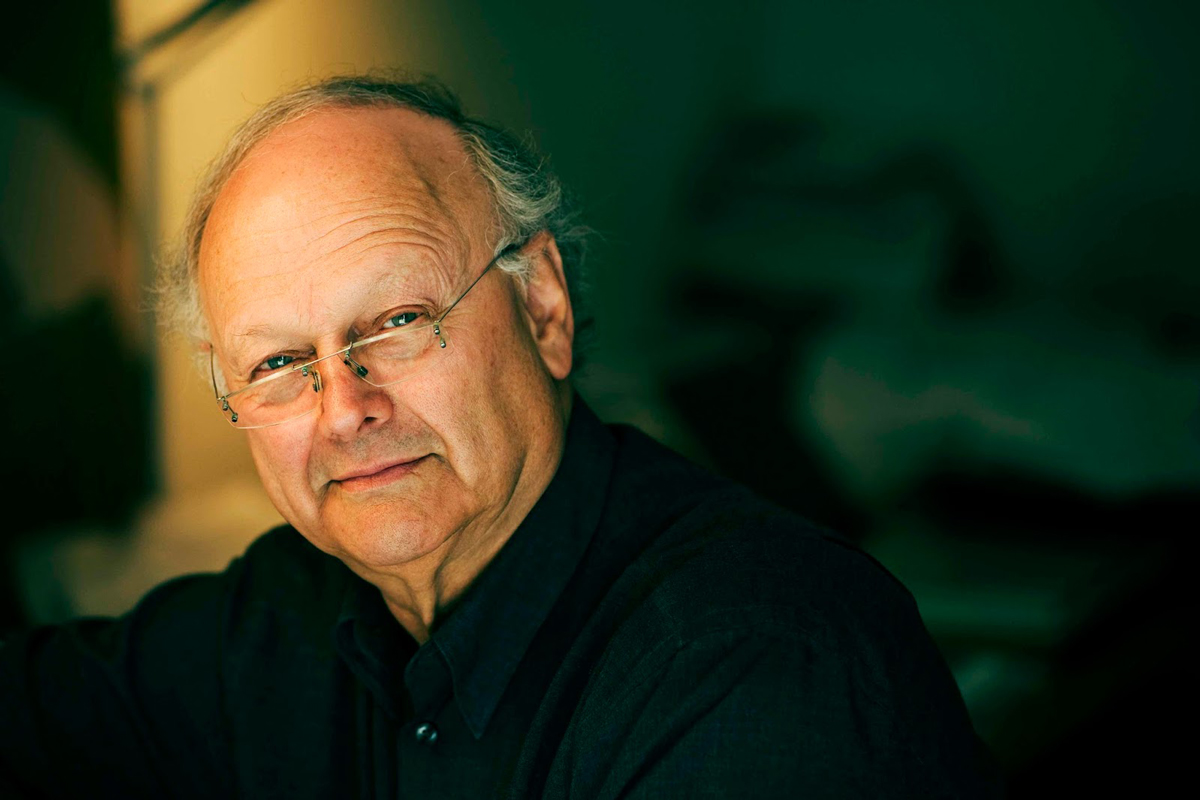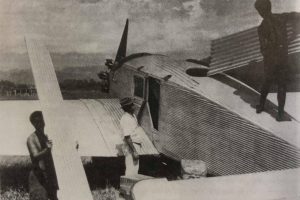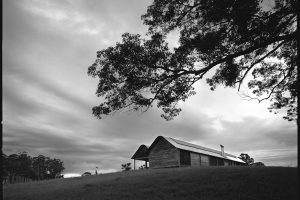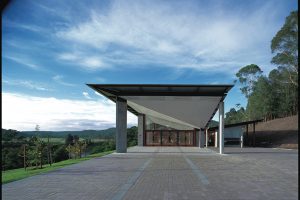“START OFF YOUR OFFICE THE WAY YOU WANT TO FINISH.”
art4d: It seems that so much of your architecture pays a lot of attention to the site context and the tropical aspect of the project. When you do an urban project, what bring you the most crucial element of your design because for urban context, talking Bangkok as an example, has so many constraints and doesn’t contain the ecological aspect of the site. What would you do in that case? What would you do in an urbanised site?
GM: I showed you one project today that was a house in probably the most urbanised area of Sydney which is in upper end of medium density housing, and the thing that one has to take into account is the context, the cultural context is just as important to me as, for example is the environmental context. It is another one of those issues. It is no different to getting water supply and waste management. It ‘s just another one of those issues, so I’ m looking at the typology of environment, of the buildings in that environment. I’ m looking at the scale of it. I’ m looking at the morphology of the area. I’ m also looking at the scale. The scale, the materiality, and the proportions that occur. So when there is an existing context, one has to take the scale of the exiting context and work at that scale with the materials offered. And yet it doesn’t have to replicate any of them. It can just be part of a new way of dealing with it.
Now I know you’ve got real issues here with traffic and pollution and air movement. Will, maybe, you’ve got to clean that up first. And then you can start working with the environment you can’t work with a polluted environment. Nor could I. I wouldn’t be so presumptuous as to tell you how you should do it . I just give you the principles that guide how I do it , and some of those principles are transferable.
You must take this as a right, in fact.
I believe we as humans have a right to breathe clean air. We have a right to have decent medicine. We have a right to actually have actually decent food. These are rights. They must be almost worked to wards. As students, we work to wards them.
The context must be aimed at presenting marvellous possibilities before you start working with the planet . If you destroy the planet you’re not working with it. So to work with it is to try and bring back things that are appropriate for certain. But we can get very good clean air within our cities which we don’t have in every one but we can get, for example the areas of our building summertime the northeast breezes are coming straight into the coast from the sea so we can capitalise on very good clean air . That’s Important. Then you start looking at where the sun is. I mean you all know where the sun is. You know you don’t let sunlight into your buildings, you know that you shouldn’t have glass roofs. They’re all disasters here. You need to star dealing with your place.
The questions you asked were about principles. Once you ask about principles, the answer should give you a direction.
art4d: So you also believe that your way of doing or dealing with architecture also in return reverse the process of environmental into the proper direction.
GM: I believe it can.
art4d: The following questions are concerning your practice. You have been working on the basis of one man practice for a number of years.
GM: 30 years
art4d: yes, have you ever dreamed of building big projects or big building? And the other question is what aspect or scope of work in your office that you find the least enjoyable?
GM: That’s a good question. Have I ever dreamed of doing multi-story buildings?
The answer is, “It would represent a nightmare. ”Lionel March, at UCLA, has shown that we could live in less than a third of the size of our cities in under 4 story high building. There is in fact no need, other than status, for multi-story buildings. They are extraordinarily heavy on energy, they are extraordinarily heavy on cost to build. So I have never had a desire to do a multi-story building in fact, I’ve never had a desire to do what I don’t want to do. I don’t what I don’t want to do.
Now I’ve had a one-person practice for thirty-one years. Why have I remained a on person practice? Well, it’s given me time to think. It’s given me time to work out the possibility of models or ways of thinking. You see, with one project, a big project that might take five years, I regard that as denying me the possibility of doing 25 projects that I can find some sort of experimental work with.
So, the thing with most multi-story buildings, they are designed around regulations, which have been designed around multi-story buildings, which are designed around regulations, around multi-story buildings. And you all end up with the same thing, and you become largely a purveyor of facades. I’m not interested in becoming a purveyor of facades. I’m much more interested in looking at what I regard as real. I know a lot of other people regard multi story buildings as real. I don’t.
Being in a one-man practice it not easy but it’s given me marvellous opportunities. You know, in my country it was never believed that a small practice could survive when I went into practice. The thing that I was told when into practice was “You’ll be back in a very short time, because one man practices and small practices won’t exist within five years.”
Thirty years down the line, not only do small practices exist, but a one-person practices exists.
When the recession came in Australia, a big recession in 1990 period, 32 percent of architects were out of work in Australis, 36 percent in Victoria alone. Which was just incredibly difficult. The profession was running taxis and yet I had more work than I could cope with.
And so I had many calls, because I tech In Australia, from young architects, just young, good really fine young architects. They had no work. They came to see me about running a small-scale practices. I said to them, I’ve known many to these young architects. Many of them were very good.
I had reached, in 1992, a place where I got very good clients, where they behaved because they had to wait for me.
I had developed a practice where instead of responding to a client by expanding the office the next day, getting bigger and bigger to cope with more and more work I said to clients “look, I’m sorry I can’t do it now. Can you wait?”
So you either expand your practice or you expand time.
So I expanded time. I said to clients, “You’ll have to wait for two months before I can do it.” And they said yes. I continued, “You have to wait 12 months” And they said yes. And then I said “You ‘ll have to wait 2 years” And they said yes.
I’m now saying “You have to wait 5 years” and they’re still saying yes.
The thing is, some of them, they are very good clients and I can’t do the work, because they do need to get going earlier. I refer this work to young architects. Very good young architects.
And so I have in fact about 16 offices in Sydney. Young architects that started from the work I sent. I have now sponsored at least 16 practices in Sydney staring up their own practices. And the model of the small practice works. And it was not thought that it would work in Australia at the time
You see, the real problem is, most architects are pretty reasonable people, and they say yes to everything. But you can’t say yes to everything, because something’s got to give.
If you say yes to everything your client wants, you’ll end up in mediocrity.
Because, as my father said to me, “You must start off your practice the way you would like to finish. “A very important statement. Remember that , young architects, young students “Start off your office the way you want to finish.”
And for every compromise you make in your work, that represents the sort of client you’ll get next. Every compromise represents a breaking down in the sort of client quality you’ll get.
If you say no, people don’t put their tail between their legs and go. They stop and think, “jeez, this guy is telling me no.”It’s amazing how it works. It has an absolutely opposite reaction to with you think.
You must be valuable if you say no to so much work!
You think about it! I reckon in your community you can do it, too. Because we couldn’t do it in my community, it was said . I didn’t it. And there are many solo practitioners In Australia.
art4d: what is your favourite material, I mean the material that you like to use and explore?
GM: Look, every material can become your favourite material. It depends upon its appropriateness for a place. For example, when I built a house on the island there, I used recycled timber and plantation-grown timbers. The last project I showed you here tonight – all of the timber. In that building is done with recycled timbers, which ordinarily would have been burned. In highway construction a lot of trees are cut down by the government and burned.
I have a man, who’s a very good builder from New Zealand. And he saw a great opportunity when I specified recycled timber for my building. He said “My goodness, I can have a business out of this” And he’s now spent five or six years working in these recycled timbers And he has now put in a half-million dollar plant for recycled timbers that he’s picking up. Timbers that have fallen in the forest, timbers that have been pushed down, cut up by landowners, and for highways.
He cleans the timbers, he whittles out holes, puts in plugs. He refinishes them in the same sorts of materials. Because the timbers, in the structure, you’ll see, have all been carefully thought about, and you’ll see evidence of members that have had holes in the surface of the beam. As long as the hole is in the middle somewhere, you can plug it, where it’s not subjected to compression and tension forces.
I use timber, it’s one of my favourite materials, whenever it’s appropriate. If I’ve got to travel long distances, then lightness counts, so I try to use lightweight materials. I’m interested I fibers, I’m interested in plastics, I’m interested in all these other things. But I’ve got use what is appropriate.
And of course, we remember that we actually like things that have a tactile quality, such as timber. It has very nice tactile quality, the way you finish it, it has a very beautiful quality. But polished steel is also really beautiful. I love polished steel, as well. But one must use the thinnest possible member size. Don’t oversize .
art4d: That’s brought to another question from the floor, regarding your detailing of your architecture. The question is about how you detail your architecture. Where do your details come from? Where do you find your details?
GM: Again I quote Mies, I’ll quote Mies because I’ll tell you, my father who was a journalist from the United States when I was ten years of age, and from twelve I had to read articles from the most interesting buildings, in my father’s view. And I have to concur that they were the most interesting buildings. And he would then question me after I’d read it. Questions and answers. And unless I got those answers right, I’d have to read the article again, until I got 100 percent of the answers correct. So, it was principles he was asking me, and they were often on the work of Mies van der Rohe, Frank Lloyd Wright, Le Corbusier, and generally the architecture from North America and Europe, rather than Scandinavia.
I wasn’t that familiar with Scandinavian architecture when I graduated. Nor was I familiar with London when in fact I was heading back to the Greek Islands and a very good friend of mine had just come back from Finland, and he said “Of all the architects I know, you’re the one that should not be going back to Greek Islands but you should go to Finland. Cancel the Greek Islands and go to Finland. “I respected this architect very much. I went. And it had an immense impact on me.
Now, back to the question you asked. Mies said, “God is in the details”
Now, at the age of twelve also, my father was a boat builder, a designer, a designer of cars – he built a car, we had a car by him. We had boats designed and built by him. By the time I was eighteen, I’d build racing skiffs, I’d built rowing boats, I built canoes, I did a lot of detail work in joinery shops. During every school holiday I would work in the joinery shop. I built casement windows, I built staircases. By the time I started architecture, I had laid bricks, I had built with my father a house with a prefabricated wall, which was on the order of 5.5 meters high by about 4.5 meters wide in two panels, fully glazed at the factory, brought onto the site with a crane, and dropped into place. Four weeks after the construction had started on the site, the roof was on. Brick walls went up, everything went inside, and the roof went on. All in four weeks from the time we started on the site.
The idea of organisation of process, of how you put things together, was absolutely critical to my learning. Process in the way of detail because detail is part of process, If you try to put the windows in before the walls are up, you’re in trouble. You’ve got to have structure up. You’ve got to have order in the way you think through.
And you’ve got to think about wind. You’ve got to think about operation. You’ve got to think about water – how water can be eliminated. Like some of those windows I showed you. Sloping glass with a flap that comes up in a monsoon in high wind areas, where the glass goes down below the opening. You can open up the walls so that the air passes through the building when it’s raining so you don’t get water in. These are the details.
Details are no less about principles than is the design of the architecture.
And God is in the details, whatever god you have.
art4d: what would you consider to be your position as an Australian architect today?
GM: Well, I have to leave others to judge that; I’m not in the position to judge that.
/ DETAILS ARE NO LESS ABOUT PRINCIPLES THAN IS THE DESIGN OF THE ARCHITECTURE. AND GOD IS IN THE DETAILS, WHATEVER GOD YOU HAVE./
art4d: ดูเหมือนว่างานสถาปัตยกรรมของคุณให้ความสำคัญกับบริบทของพื้นที่ และมีลักษณะของภูมิประเทศเขตร้อนในงานของคุณ เวลาที่คุณทำงานที่อยู่ในเมือง อะไรเป็นปัจจัยที่นำคุณไปหาองค์ประกอบสำคัญที่สุดในการออกแบบ เนื่องจากในบริบทของเมืองอย่างเช่น กรุงเทพฯ นั้นมีข้อจำกัดมากมาย และก็ไม่มีลักษณะที่เป็นเรื่องระบบนิเวศน์บริเวณที่ตั้งด้วยคุณจะทำอย่างไรกับโปรเจ็คต์ในเมืองแบบนี้
GM: ผมได้แสดงผลงานชิ้นหนึ่งให้
ในปัจจุบันนี้ผมทราบว่าคุณกำลั
คุณต้องยึดถือเรื่องนี้ ในฐานะของสิทธิ ผมเชื่อว่ามนุษย์เราทุกคนมีสิ
คำถามที่คุณถามนั้นมันเป็นเรื่
art4d: คุณเชื่อว่าวิธีที่ทำงานหรือแก้
GM: ผมเชื่อว่ามันสามารถเป็นอย่างนั้
art4d: คำถามต่อๆ มาจะเกี่ยวข้องกับอาชี
GM: 30 ปีครับ
art4d: ถูกแล้วในระยะเวลานานขนาดนี้ คุณเคยฝันถึงโปรเจ็คต์ใหญ่ๆ หรืออาคารใหญ่ๆ บ้างไหม? อีกคำถามหนึ่งคืองานที่คุณทำที่
GM: คำถามดีครับ ผมเคยฝันถึงการได้ทำอาคารสู
จนถึงปัจจุบันนี้ผมทำงานคนเดียว 31 ปีแล้ว ทำไมถึงมีแค่คนเดียวนะหรือ? มันทำให้ผมมีเวลาคิดเวลาที่จะศึ
ดังนั้น สิ่งที่เกิดขึ้นกับอาคารสูงๆ ส่วนใหญ่คือ จะต้องออกแบบภายใต้กฎเกณฑ์ต่างๆ มากมาย สุดท้ายก็ต้องมาจบที่เรื่องเดิ
การทำงานคนเดียวไม่ใช่เรื่องง่
30 ปีผ่านไปไม่ใช่แต่บริษัทเล็กเท่
ผมได้รับโทรศัพท์มากมาย จากสถาปนิกรุ่นใหม่อายุน้อยๆ เก่งๆ ทั้งนั้น เพราะว่าเพราะผมสอนหนังสื
เรื่องของเรื่องคือ พวกเขาเป็นลูกค้าที่ดีมากๆ และผมไม่สามารถทำงานให้ได้
ทุกๆ เรื่องที่คุณประนี
art4d: วัสดุที่คุณโปรดปรานคืออะไร หมายถึงวัสดุที่คุณชอบใช้ หรือทดลอง ค้นคว้า
GM: ฟังนะวัสดุทุกประเภทสามารถเป็
ผมได้ช่างที่เก่งมากๆ มาจากนิวซีแลนด์ และเขาสบโอกาสที่จะเลือกไม้
เขานำไม้พวกนี้มาทำความสะอาด ตกแต่งรอยแตกอุดรูให้เรียบร้อย เขา Refinish มันใหม่กับวัสดุอื่น เพราะว่าไม้พวกนี้มีโครงสร้างพิ
ผมใช้ไม้พวกนี้ ทุกโอกาสที่เห็นว่าเหมาะสม มันคือวัสดุที่ผมชอบ ถ้าผมต้องเดินทางในระยะทางไกลๆ ผมต้องคำนึงถึงเรื่องน้ำหนักด้
art4d: มาถึงคำถามอีกข้อหนึ่งจากผู้ฟั
GM: ผมต้องยกคำพูดของ Mies อีกครั้งนะครับ ผมเคยบอกแล้วว่าพ่อของผมเป็นสื่
ความคิดเกี่ยวกับการจั
คุณต้องคิดถึงเรื่องกระแสลม ต้องคำนึงถึงเรื่องการปฏิบัติ คิดถึงเรื่องน้ำ จะป้องกันน้ำอย่างไร ดูอย่างหน้าต่างที่ผมแสดงให้ดู กระจกเอนมีฝาปิดที่โผล่ขึ้
art4d: คุณคิดว่าคุณอยู่ในฐานะใดสำหรั
GM: ผมว่าปล่อยให้คนอื่นตัดสินดีกว่
FIRST PUBLISHED IN ART4D VOL.80 MARCH 2002
Edited and translated from Glenn Murcutt’s lecture in Bangkok on November 3, 2001
Special thanks to the Australian Embassy in Thailand and BHP Steel Building Products (Thailand)
Cover Photo from ozetecture.org
PREVIOUS STORIES





